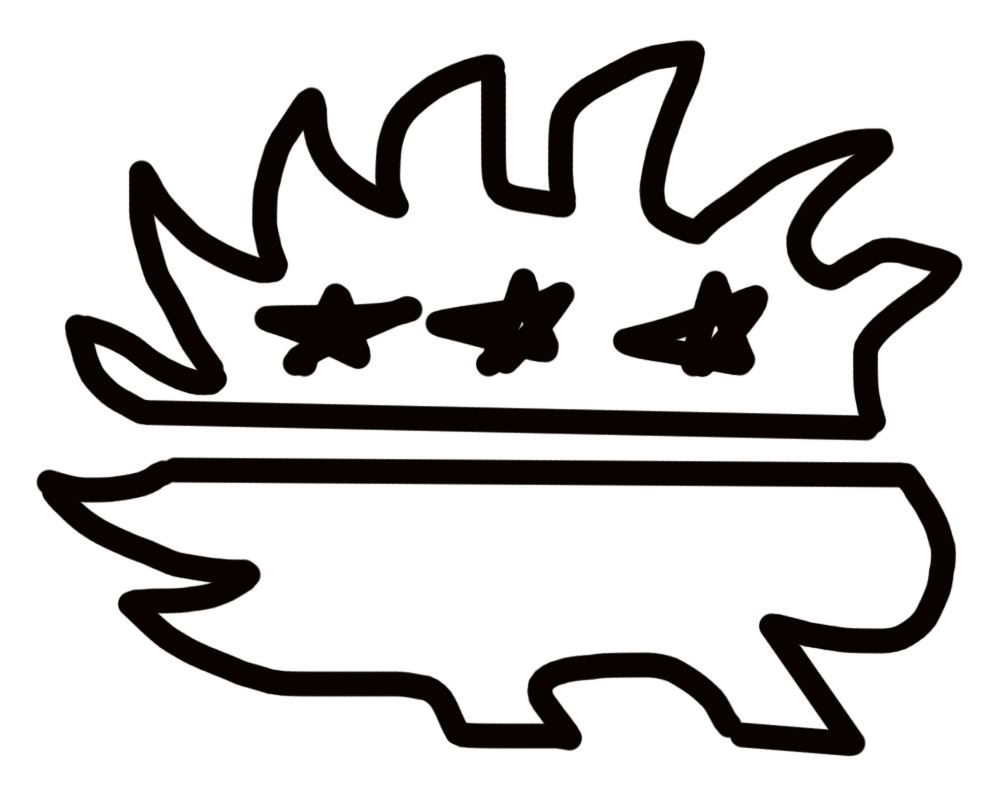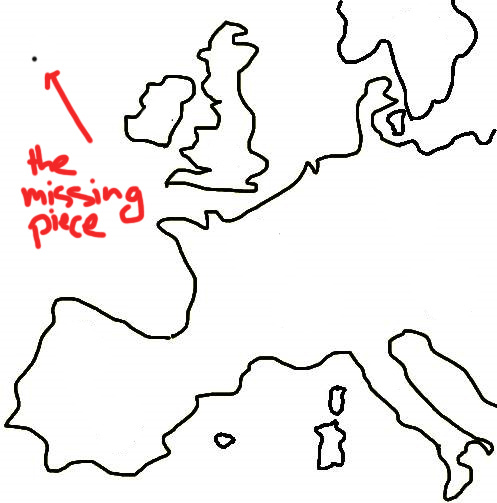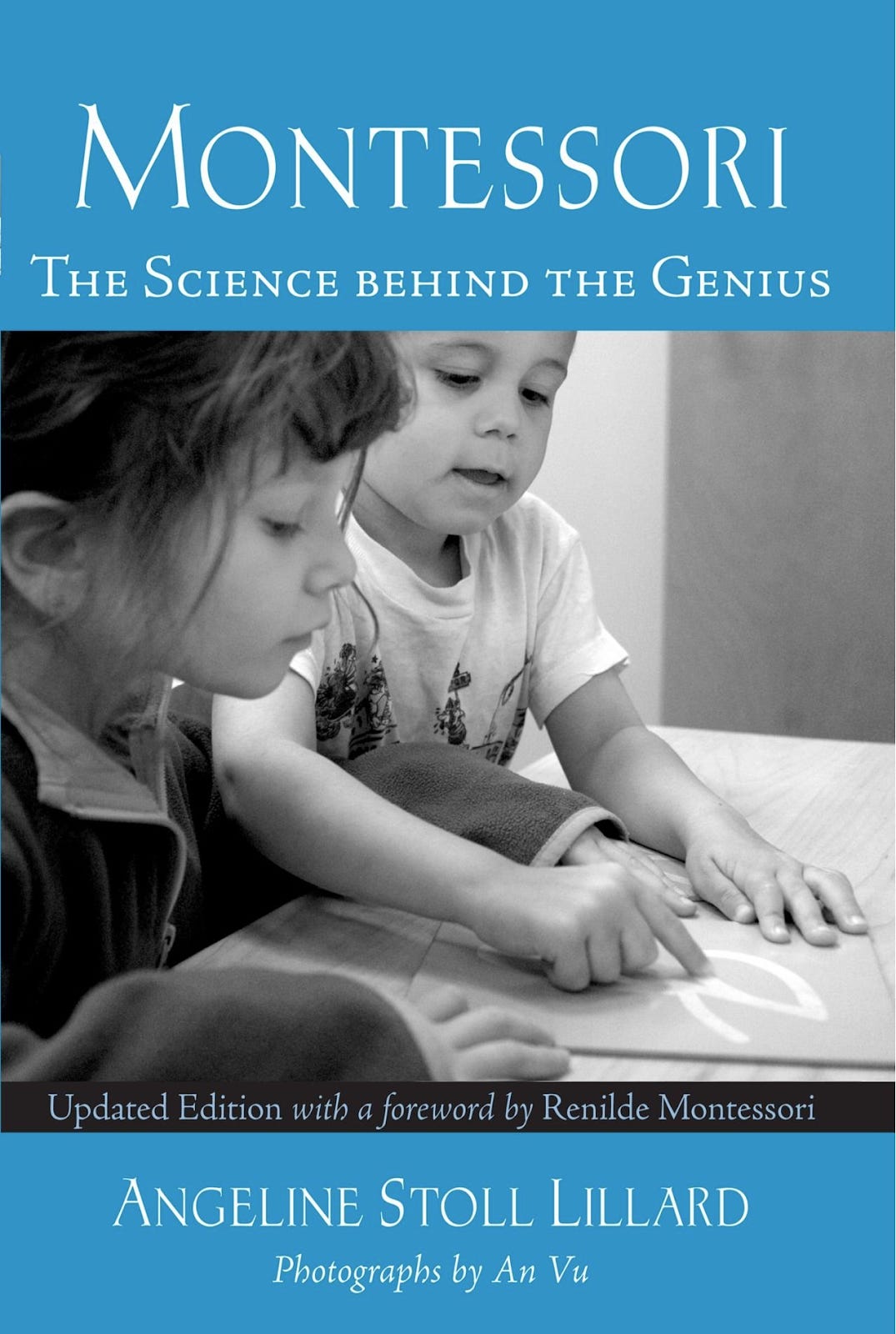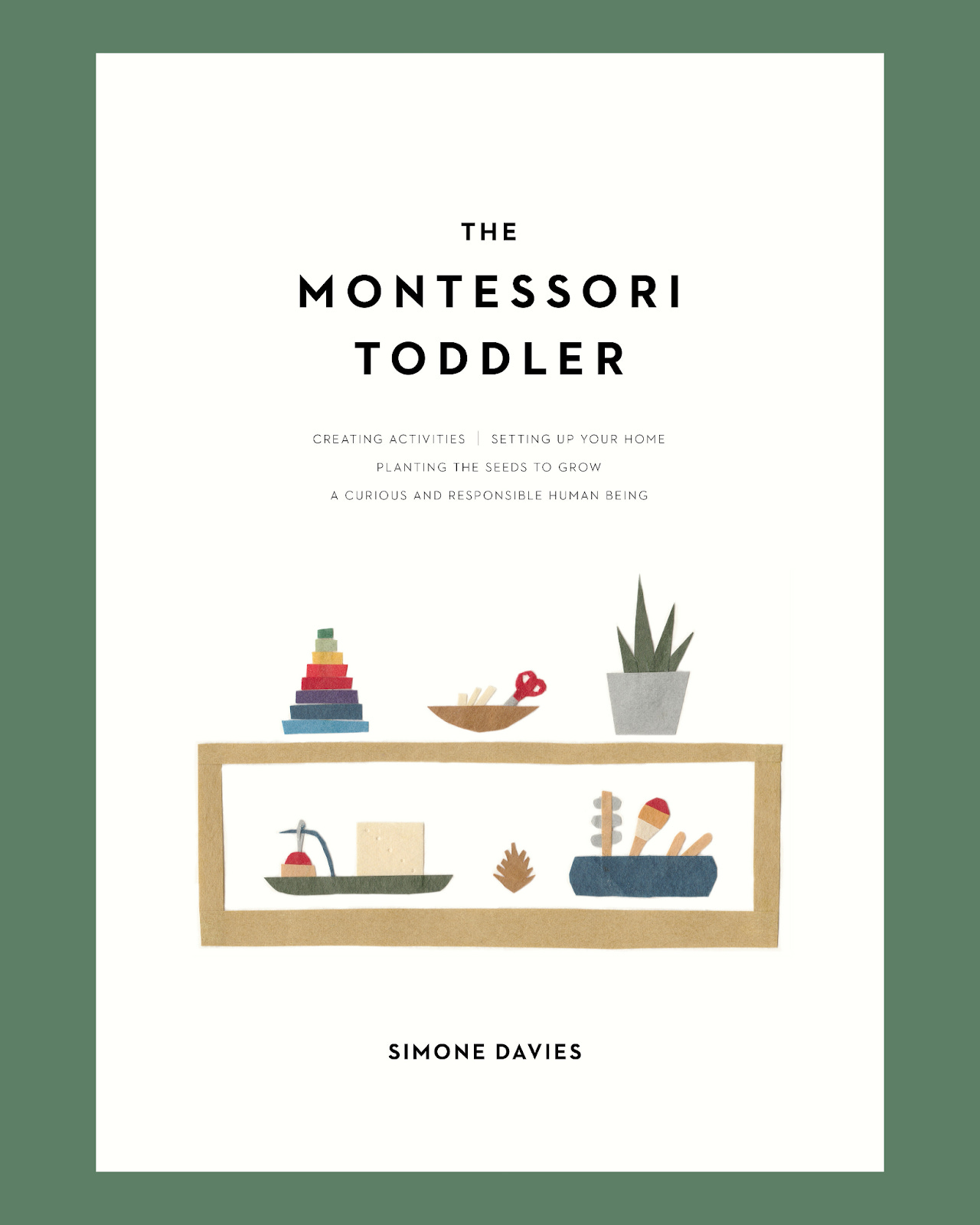The first of a two-part review of Montessori: the Science Behind the Genius, among others.
Picture a toddler just a year and a half old helping his mom unload the dishwasher and load the washing machine, pouring himself some water to drink from a glass and cleaning up his own spills. By three years old, he spends his mornings in three uninterrupted hours of quiet concentration, perhaps working on his sewing or polishing his nicest shoes, and afterwards makes himself a healthy snack. By six years old, he’s following a recipe to prepare you a meal including items he grew in his own garden.
That’s the pitch of the Montessori method, which is premised on the idea that your very young child is a very capable human being but that the world hasn’t been constructed to empower him. So your job as a parent is to change his world. Montessori Toddler author Simone Davies promises that “when we set up our homes to make them more accessible to our young children, they take on tasks with eagerness, capability, and delight.” The classic Montessori line is that a child wants you to help him do it himself. You want to step in as little as possible and as much as necessary.
Figure 1. Feminism was once defined as the radical notion that women are human beings. The economist Bryan Caplan contests that definition. But Montessori might be defined as the radical notion that children are human beings.
Which sounds great. Except getting this little helper requires more work than having no help at all. Inevitably, you can make a child’s bed better and faster than he (as you can with pretty much anything in his life). But Maria Montessori herself cuttingly asked, “Who does not know that to teach a child to feed himself, to wash and dress himself, is a much more tedious and difficult work, calling for infinitely greater patience, than feeding, washing and dressing the child oneself? But, the former is the work of an educator; the latter is the easy and inferior work of a servant.”
Figure 2. As the old saying goes, teach a boy to fish and you feed him for a lifetime; give a boy a fish and you can get to church on time.
I have been reading at least a couple books on each of the most popular homeschooling pedagogies and they have all kinds of ideas when your child turns six. But the earliest years tend to get short shrift and can basically be summarized as “read to your child.” Montessori is different, partially because Maria had to be. As Angeline Stoll Lillard, the author of Montessori the Science Behind the Genius, tells the story, Montessori started her career working with children with special needs and through her work they “passed state educational tests designed for normal children, an event that aroused international attention” and commendation for her extraordinary results.
But “Dr. Montessori had a different reaction. Rather than marveling at what the [institutionalized] children had done, she instead marveled that normal children were not doing better on such tests, given their obvious advantages.” So Montessori tried to work in regular schools but the “governing bodies in Rome” wouldn’t give her access. Montessori seized the opportunity to work with kids before formal school and came to the conclusion that education should start from birth. Amusingly, because hers was not an official school, Montessori didn’t have access to typical school supplies, which inspired her to create her own.
Figure 3. Appropriate that a libertarian-ish pedagogue has a libertarian superhero origin story
Montessori’s background was in medicine - she was one of Italy’s first female doctors - and she treated her classroom as a science experiment (later, Montessori would insist that teachers ought not to have useless educational degrees but instead study science). She had hypotheses about what children might enjoy and benefit from but she mostly observed the children and tried to understand what interested them. What emerged out of her observations and trial and error was a philosophy and a series of recommendations that now constitute the Montessori method. Its heart is described in my favorite quote of hers: “The role of education is to interest the child profoundly in an external activity to which he will give all his potential.”
My wife and I are not too far into parenting but so far Montessori has been incredibly helpful in giving me, a father without siblings or much exposure to children before having children, real insight into what to expect from my son and how he can achieve a productive flow. I find the activities described to be consistently predictive and well-thought out. A simple example: our son’s nursery has a mirror with a ballet bar that he has used, as he has grown, to lift himself up and then practice walking. It made sense in theory, it was fun to watch in practice, but it’s hardly a standard feature of nurseries.
And there’s more to Montessori than just practical life. Maria believed that there was a mind-body connection and that very young children learned better when experiencing concepts through their five senses - so she gave them tactile experiences that are fascinating and helpful in understanding the real world. Dr. Lillard explains that “Sensorial Materials support abstraction, giving the child volume, weight, warmth, color, dimension, texture, sound, and so on—all the abstract qualities of which every object in the universe is composed. The Sensorial Materials thus provide the keys to the world, abstracting for children every physical dimension of every object in the world.” Such materials include the Pink Tower (for three year olds), a “a series of 10 graduated cubes, the dimensions of which increase by one unit (1 cm) on all sides as one moves from the smallest cube to the largest. The cubes are all the same color, which Dr. Montessori claimed helped keep the child’s focus on the dimension of interest, the gradually increasing size.” And Binomial and Trinomial cubes (for four year olds), “wooden boxes with two hinged sides that open to expose a set of blocks inside. The blocks fit perfectly inside the wooden box. Embodied in those pieces is the algebraic formula for finding the volume of a cube.” Such visual-spatial skills - “the ability to understand shapes and manipulate objects in their minds” - have been associated with later math success.
Figure 4. It’s been suggested that one reason girls outperform boys these days in school is that dads read to their daughters but want to play sports with their sons. I read intensely to my son but I am not above throwing around the old sphere or oblong.
Notably, many Montessori activities are “closed-end” and have “control of error” that allows a child to figure out the problem himself. If you’re washing off a table, you don’t need to be told your job isn’t done if there’s still dirt on it. If you're building the Pink Tower and find a block bigger than the one you've placed, it's time to rebuild. If you’re solving a puzzle of the countries of Europe (as Montessori teaches geography) and there’s a piece left over, you know something is amiss.
Figure 5. But where is Andorra??
The whole premise of Dr. Lillard’s book is that more than a hundred years ago, Maria tapped into an extraordinary system that has subsequently been mostly validated by social science. She writes:
“Twenty years ago, I was a Montessori skeptic… I was convinced that while Montessori surely had its strengths, traditional and other forms of education surely had theirs too, and the best educational system would combine the strengths of each system… The delegates at Oxford University Press asked that I write a balanced assessment of Montessori, pointing out where the evidence is not supportive as well as where it is. I have done my best to do this, but there is a real problem. Their assumption, like my original one, was that Montessori must have aspects that are supported by research, and aspects that are not. Yet her major ideas—that there is a close relationship between movement and cognition, that the best learning is active, that order is beneficial for children, and so on—are supported by a strong body of evidence in developmental psychology.”
Dr. Lillard thus highlights results about the aforementioned mind-body connection and about how “learning and well-being are improved when people have a sense of control over their lives” and that “people learn better when they are interested in what they are learning” - consistent with a Montessori classroom where the activities have been designed to attract children’s interest and then the children choose on a day to day basis which activities to pursue. Dr. Lillard talks about the benefits of peer collaboration, especially between children of slightly different ages, and about how children, especially toddlers, have a strong desire for order in their environment and routine in their day. She discusses the benefits of an authoritative but warm approach to children that praises effort rather than intelligence. And Dr. Lillard dives into how learning can be enhanced when you directly understand the utility of the lesson (i.e. all that practical life).
Perhaps most important, at least to me, is the finding that “the ability to direct one’s attention in a sustained and concentrated way fosters an array of positive developments and is itself trainable.” One of the most powerful predictors of future success (and health and mental health) is self-control. Academics call this “executive function” and it includes “inhibition (of a thought or behavior), working memory (which can range from simply holding information in mind to manipulating that held information), shifting (e.g., following one set of rules and then a different set of rules),” as well as planning ahead and maintaining focus. Montessori’s sequenced design gives children the appropriate challenges to do all of it, inviting deep concentration to the point where three year olds are concentrating quietly for three hours uninterrupted.
There’s also another name for self-control: Character. Montessori from the Start reminds us that
“Parents in the early half of the twentieth century were primarily concerned with the development of character in their children. They wanted to be certain that their children were ready to cope with adversity for it was surely coming to them one day whether in personal or national life. The development of character involves self-discipline and often sacrifice of one’s own desires for the good of self and others. Montessori education, developed in this historical period, reflects this emphasis on the formation of the child’s character. However, parents today are more likely to say their primary wish for their children is that they be happy. In pursuit of this goal they indulge their children, often unconsciously, to a degree that is startling to previous generations. All parents need to remember that true happiness comes through having character and discipline, and living a life of meaningful contribution—not by having and doing whatever you wish.”
By now you may be ready to sign up your very young relatives for Montessori and set them up for the success achieved by Montessori alumni who founded Amazon, Google, and Wikipedia. But perhaps first you should wait for our next email, when we will discuss Montessori’s heresies and criticisms.
Figure 6. Click here to acquire Angeline Stoll Lillard’s Montessori: the Science Behind the Genius (8/10). Dr. Lillard earned her doctorate at Stanford and runs the Early Developmental Lab at the University of Virginia. This book is a great and serious look at the social science behind Montessori but you could not create your own curriculum out of it.
Figure 7. Click here to acquire Montessori from the Start by Paula Polk Lillard and Lynn Lillard Jessen (8/10). Yes, the Lillards are all part of the same family. No, my interest in Montessori is not just because Paula’s maiden name is Polk and she might have some distant relationship to America’s greatest president. This is a good, inspirational book about how to set up your home from birth for your child. It also includes some Montessori street cred: “both Mussolini and Hitler ordered all Montessori schools in their respective regimes closed in the 1930s. Montessori schools were the only secular educational institutions so designated.” Here’s part of a letter that Montessori early education pioneer Dr. Silvana Montanaro sent to Lynn before the latter’s daughter turned two:
“I can assure you that your daughter will, very soon, not only prepare your breakfast but become your best collaborator: please ask her to do things for you and ask her with the kindness and seriousness with which you would ask anyone else. Children are the most generous, loving and interested human beings you could work with. Through the work with you, she will learn: she is able to do things, she is needed in her family, and she can give something to others. Ask her to set the table, to bring things from one place to another, to wash cups and other little things. You will be surprised how much and how well a small child can work. At the same time you must never forget to set the limits of her activity. Children need to know where they can go and what they can do in order to feel secure.”
Figure 8. Click here to acquire Montessori Baby (7/10) and here to acquire Montessori Toddler (7.5/10), both by Simone Davies. Along with Montessori Home by Ashley Yeh, helpful because they lay out in sequence what you should be doing when. Montessori Toddler has an especially good opening about what to expect from a toddler (i.e. age 1-3) including “Toddlers are not giving us a hard time. They are having a hard time.” In Montessori Baby, Davies includes a letter to caregivers other than parents:
“Dear grandparents, friends, caregivers: Thank you for visiting me. You are special to me. Please handle me gently. Ask me if I’m ready before you pick me up, and wait until I respond. Check with me if I’d like a hug or a kiss. And you can tell that I need a little more time if I arch my back, turn away, or cry. Don’t take it personally. Sometimes I need more time to warm up. When changing my diaper, feeding me, or bathing me, talk to me and tell me what you are doing. Touch my body as if it was the first time you had been touched. This is still very new for me. And there is no rush. I love these moments for connection. Talk to me—if I make a sound, you can copy me. Tell me about all the things around me—the names of those trees, flowers, and vegetables. I want to know everything. I like a bit of a sing-song voice, but it doesn’t have to be over-exaggerated and you don’t have to use nonsense words like “goo, ga, ga, ga”—copy my sounds, but otherwise talk to me as if I understand everything. Because I am taking it all in. I know I said talk to me, but I also like quiet when I’m concentrating on something. Let me finish exploring my hands or toes, that leaf, that rattle, that mobile, that ball. My concentration is just as important as yours when you are focused on your favorite thing, so please don’t interrupt. If I fall down and cry, wait a moment before rushing to pick me up. Let me feel it. I am discovering how things work. Sometimes I’ll be okay and get back up as if nothing happened. If I do need some comfort, you can check if I’d like a hug. Don’t tell me not to worry or not to cry or try to distract me. I want people to allow me to process these feelings. Maybe just ask me if it was a shock. When I am crying, I am trying to communicate something. Please don’t ignore me. I don’t just cry because I am hungry. I cry when I am having trouble falling asleep (a comforting hand is sometimes enough). I cry when I’m overstimulated from our day (soothing me and removing stimulation helps). I cry when I want to try something new (perhaps we could try a different space or a different activity). I cry when my stomach hurts…. I cry when I have wet or soiled my diaper (it feels so strange against my body). I cry when I’m wearing some clothing that is scratching me (please use soft clothing with few seams or tags that can irritate me), or when there is a crease in the blanket I am lying on (I know it seems small, but it feels like I’m lying on a scratchy log right now). I cry when there is a lot of movement in the house (I love my siblings but can we find a quiet place right now?). I cry when there is little movement in the house (I’d love to lie under the trees and watch the leaves move). I cry when I have drunk too much milk (and my stomach needs time to digest that last feed). And some days I just feel cranky for no apparent reason and I’d like you to love me anyway. Help me as little as possible and as much as necessary—if you help me too much, I’ll never be able to make these wonderful discoveries for myself; but if you don’t help me at all, I may give up on the world around me. I know you’ll find the right balance. Let me be close to you. And let me down on the ground to explore. Or take me outside. Nature is the best present. Please share your personal gifts and talents with me. Sing to me, play an instrument, take me out in the garden as you plant the bulbs, show me how you knit or carve wood, teach me your favorite sport or card game, tell me about the old days. I don’t need a lot of physical gifts. I prefer simple toys that don’t flash or sing noisy songs. I like ones where I need to think and interact with them. There are lots of ideas in chapter 6 of this book. And they are often not what you find in toy and baby stores. I don’t like those screens—the light makes it hard for me to sleep. And I’d rather be able to touch real objects and put them in my mouth. And speaking of my mouth, that is how I observe the world right now. So let me put things in my mouth, and remove things that won’t be safe for me. Smile at me, laugh with me, look deep into my eyes. Love me. I love you right back.”
Thanks for reading! For more, check out my archive of writings, including Why You'd Want to be a Pirate, a review of the Invisible Hook and the economics and laws of pirates.
If you’ve received this email from a friend and would like more, sign up at www.grantreadsbooks.com or shoot me an email at grant@grantstarrett.com with the subject “Subscribe.” I read over 100 non-fiction books a year (history, business, self-management) and share a review (and terrible cartoons) every couple weeks with my friends. Really, it’s all about how to be a better American and how America can be better. Look forward to having you on board!











